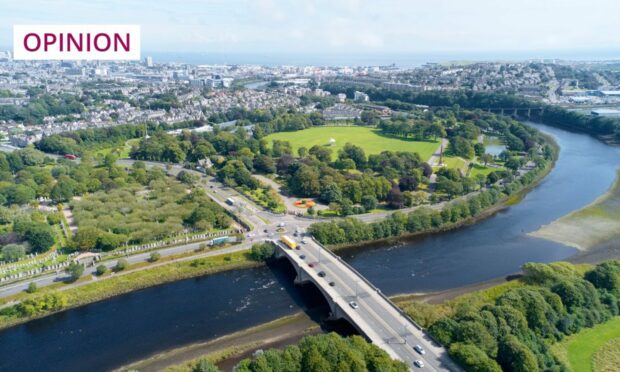In Scotland, we’re blessed with the most stunning landscapes. And, with 125,000km of rivers and streams in the country, from Highland burns to wide, lowland rivers like the Tay, we’re particularly lucky.
But it may come as a surprise that there are very many potential contaminants in these wonderful waters. It may also be a surprise that many of those contaminants are what we put into our systems. In other words, they come from us.
They’re what’s left of the paracetamol, ibuprofen, antibiotics and other medicines that we take on a daily basis. Our bodies don’t absorb a large amount of these, and they get flushed into the sewerage system. Because not all sewage treatment facilities can remove these chemicals, they ultimately end up in our rivers and/or the sea.
Here at The James Hutton Institute, we’ve looked at the pharmaceutical pollution in detail in the River Dee. It’s an iconic river, running 140km from high up in Scotland’s Cairngorm Mountains down to where it flows into the sea at Aberdeen harbour mouth. The results wouldn’t look out of place in the average bathroom cabinet.
Research by my colleague Dr Zulin Zhang discovered that paracetamol was the most commonly found compound. But there was also oestrogen (the female hormone), antibiotics and hallucinogens. While the concentrations of all were extremely low and around the Scottish average, over a year we estimated that 148kg of the most prevalent pharmaceutical – paracetamol – was going into the river per year.

It’s important to say that the levels of pollution found, even as a worst-case estimate, didn’t pose a risk to humans, and these pharmaceuticals don’t get released into rivers everywhere. In cities, where there’s a greater population density, the treatment works tend to be more intensive, so remove more of these contaminants.
While our waste dominates the pollution we’ve looked at, there are also other sources, like septic tank release and when sewage sludge applied to fields gets washed away into rivers. These have been found to contain paracetamol, too, but also antibiotics, caffeine and even insect repellent used to deter our famous midges.
It’s complex but, as so much of this pollution comes from us, we do have to ask questions about what and how much of it we’re consuming – do we always need it? Also, what about the effects the increasing mix of different things we’re putting into rivers could have on wildlife, as well as water quality?
And what happens when the hotter weather means rivers start to get shallower and the pollution more concentrated? What will be the impact on nature?
Without data it’s hard to build a picture of what’s going on
There are a lot of unknowns. We don’t yet fully know the impact all this has on the smallest life in our rivers – bacteria – which all other life relies on, for example. We don’t know much about how antibiotics in the water can create antimicrobial resistance in bacteria in the water, or if that can then reach us.
We don’t have the answers yet, but we’re working on it. We’re looking at what antibiotics are doing to bacteria. We’re also gathering data.
Without data it’s hard to build a picture of what’s going on. So, through a Scottish Government-funded project, my colleague Dr Lisa Avery is leading work to build a baseline to show levels of pollution, including pharmaceuticals, microplastics and forever chemicals, in Scotland’s rivers. It will be the first national baseline of Scottish river pollution to see trends, and predict what might happen in different scenarios.
We’re using new types of sensors to gather data that we can then use to develop models to help us understand how pollutants enter and move around the environment, and help us to deal with them better. We’re even drilling right down to looking at what organisms are in our rivers by using environmental DNA. This lets us profile the life in our rivers.
Another colleague, Dr Miriam Glendell, is working with partners to help those who prescribe medicines to pick ones that are more environmentally-friendly. Looking at green and blue prescribing where appropriate could also be a great option – offering people time in nature, whether that’s woodlands or wetlands, instead of pills, for example.
There’s a lot of work to do, and we can all play our part in the decisions we make in our daily lives. We live on the doorstep of some stunning rivers. Let’s take the best care of them.
Dr Eulyn Pagaling is an environmental microbiologist for The James Hutton Institute

